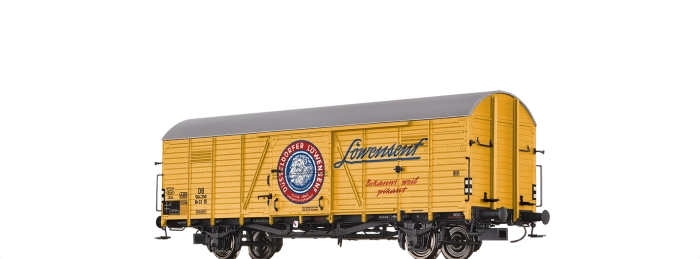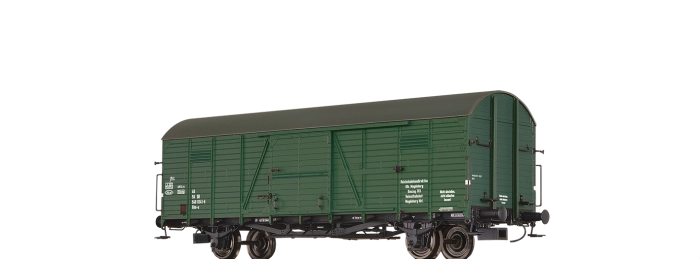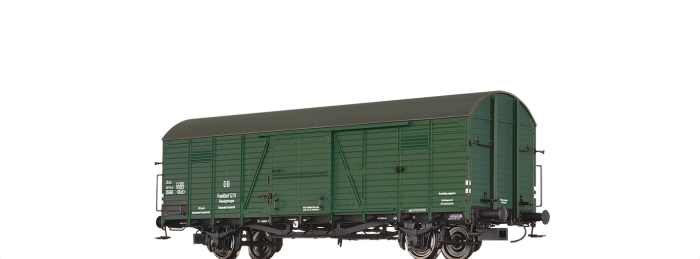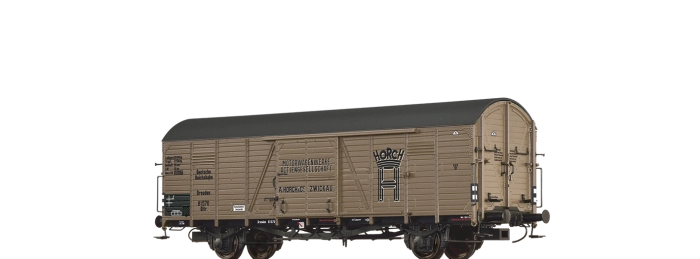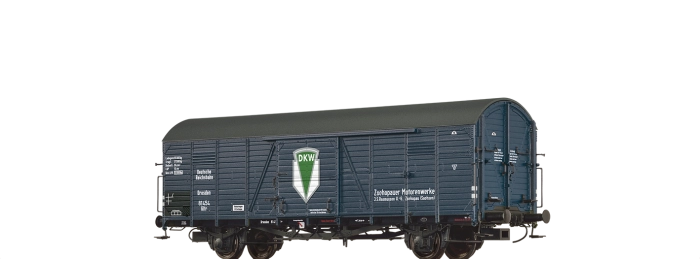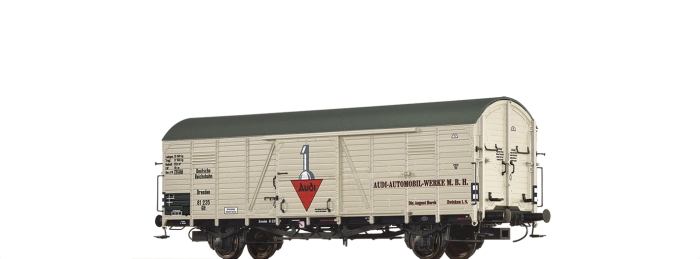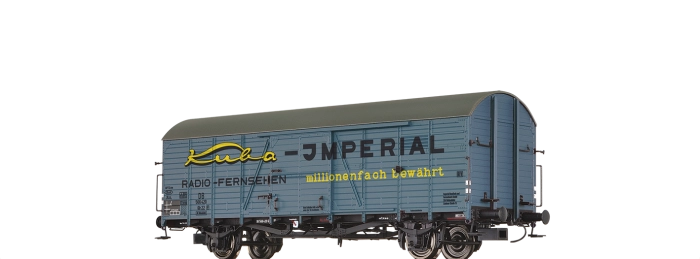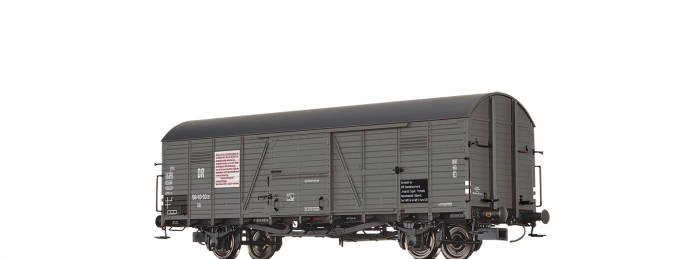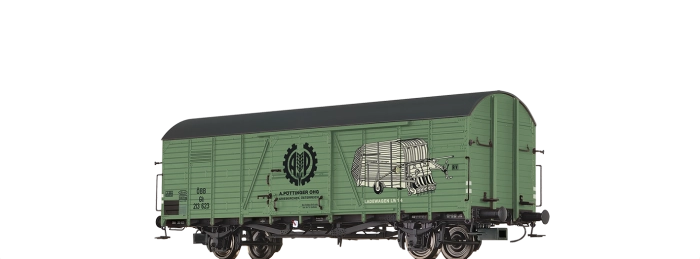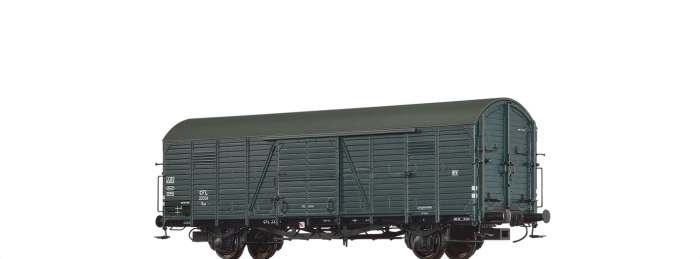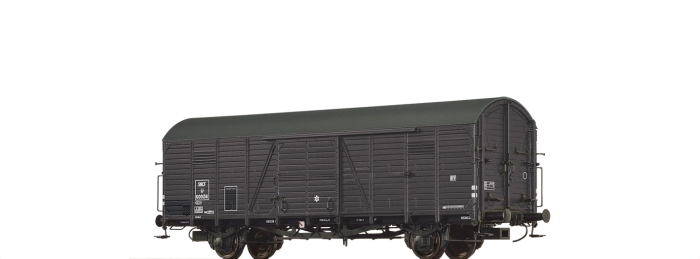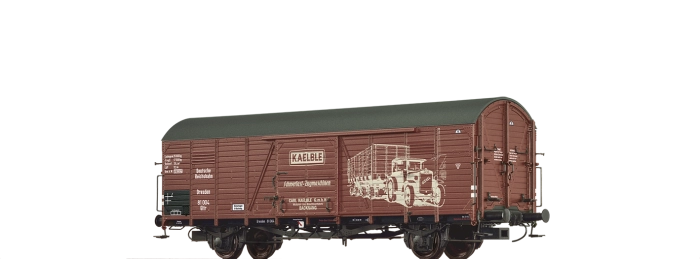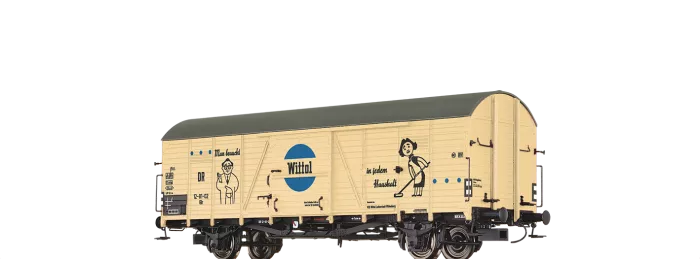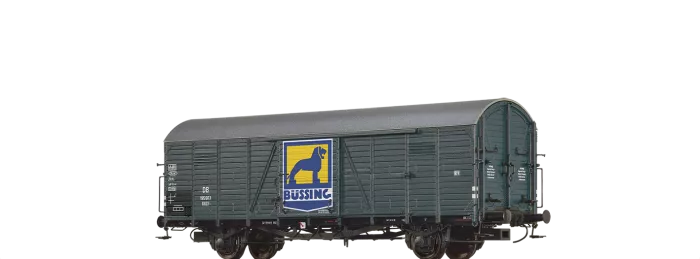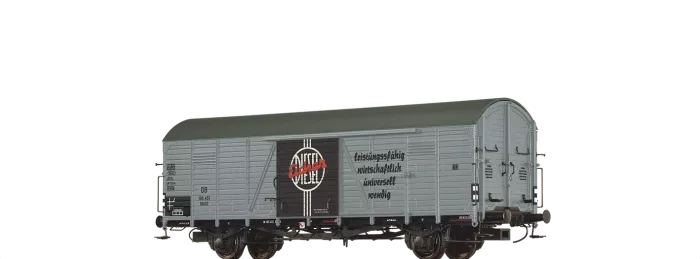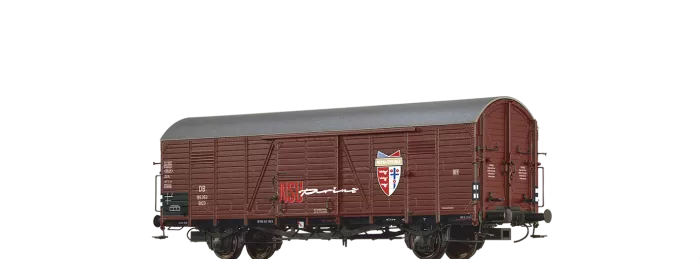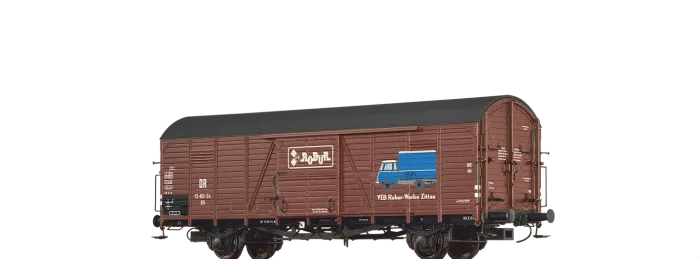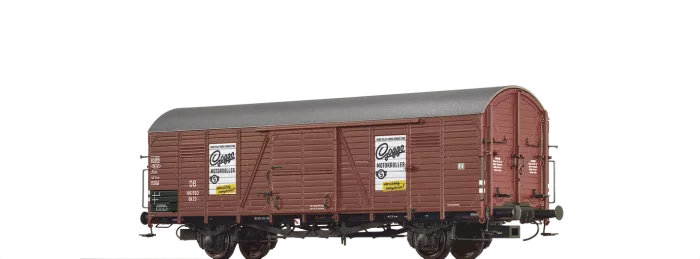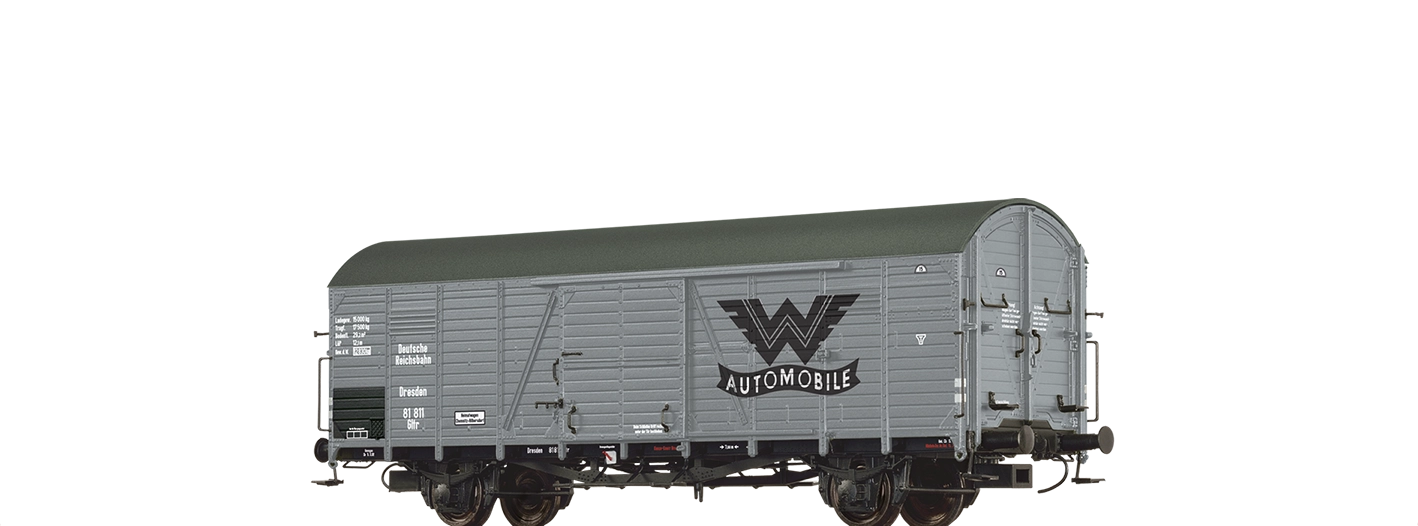
Covered Freight Car Gltr "Wanderer" DRG
Road no.: 81 811
Model details
- Axle holders made of embossed sheet metal
- Individually mounted wheelchocks
- Fine replica of the wheel bearing
- Individually mounted brake switch
- NEM-standard short-coupling
- True to original car bottom
- Wheelsets with inside contours
Wanderer is a registered trademark.
Downloads
Info about the original
The association construction types of the German national railway association already included an open-plan covered freight car, which was used in particular for freight with a high weight and low volume. After the foundation of the DRG, the main standard freight cars were redesigned according to the so-called principles of interchangeability. For this the production tolerances were kept so small that it was very easy to change replacement parts. The design of the new open-plan freight car was heavily based on its association type predecessor. The main dimensions such as wheelbase and length over buffers was adopted, as were the two metre wide doors opening to the right, which however were installed suspended. New features included the riveted strut bracing, which allowed a lower design of the longitudinal beam, and the barrel design of the roof instead of the basket arch of the predecessor cars. Some of the cars had a handbrake with brakeman’s cab and/or variable gauge wheel sets for adaptation to Russian wide gauge, identifiable by the white painted buffer sleeves and the sub-class mark "r". All covered open-plan cars were allocated to the "Dresden" class district. As already mentioned, the cars were particularly suitable for light freight with large volumes (e.g. glass industry). When the design was revised later, a few changes were made, for example longer and softer suspension springs, which allowed higher speeds and therefore also use in passenger trains. Due to the turmoil of the war, not only the two German railway administrations but also many other European railways had cars of this type in their stock after 1945. The last ones were only retired in the 1980s - proof of the quality and durability of the design.


